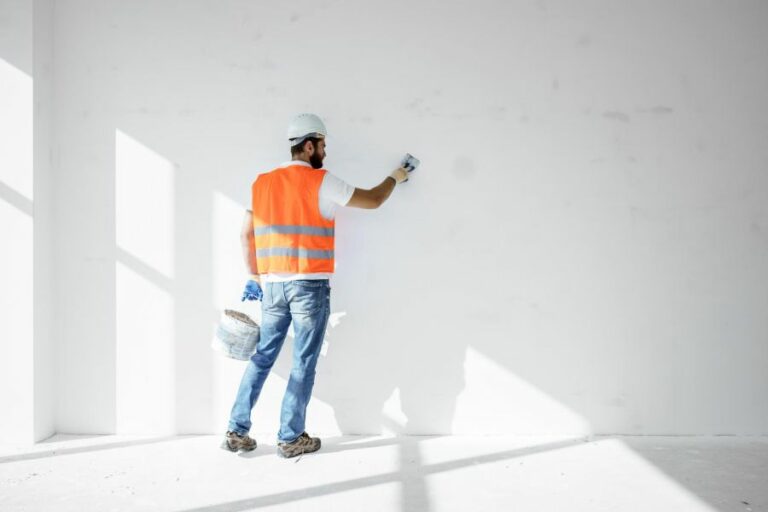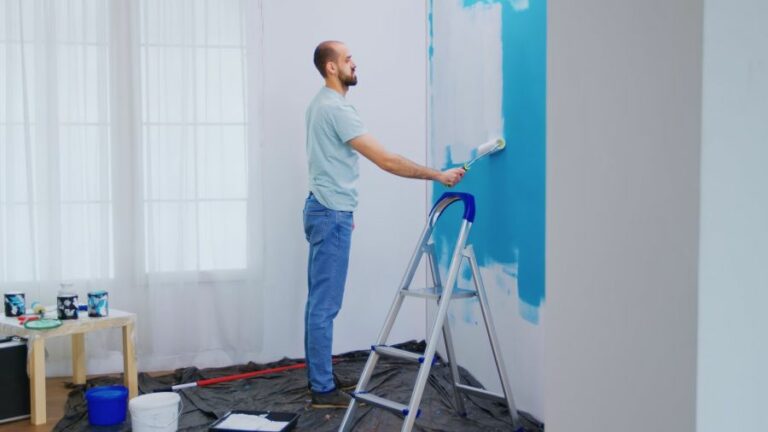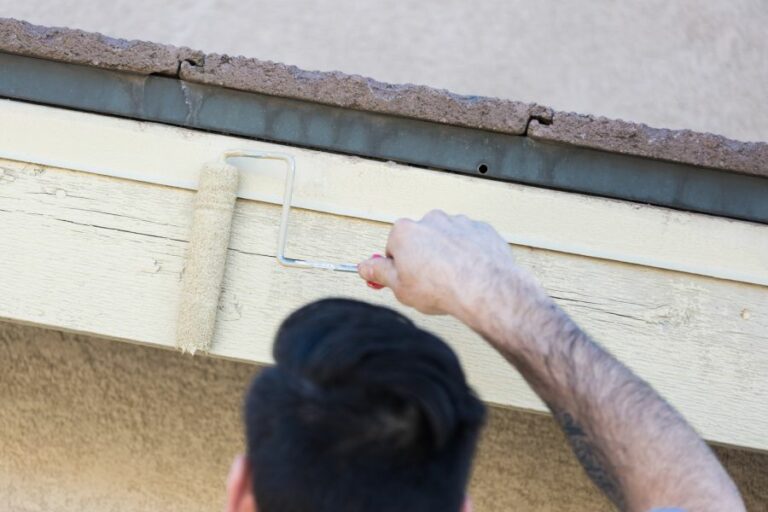Optimizing Paint Adhesion: Surface Profiling Tips
Are you struggling with achieving optimal paint adhesion on your surfaces? You’re not alone. We’ve got you covered! With the right surface profiling techniques, you can enhance paint adhesion and ensure a durable, long-lasting finish.
Optimizing paint adhesion: surface profiling tips:
To optimize paint adhesion through surface profiling, select the appropriate method, such as abrasive blasting, grinding, chemical etching, or mechanical abrasion, depending on the substrate’s material. Follow expert recommendations for specific surfaces like metal, wood, or concrete. Ensure thorough cleaning and surface preparation before painting to achieve a long-lasting and visually appealing finish.

Unlock the secrets to flawless paint adhesion with our surface profiling tips. Delve deeper into specific techniques, materials, and tools that ensure long-lasting and visually appealing results. Keep reading to learn how to achieve that perfect finish and enhance your painting projects!
Contents
- 1 Enhancing Paint Bonding: Expert Surface Profiling Techniques
- 2 Effective Methods for Advancing Paint Adhesion
- 3 Techniques for Boosting Surface Bonding Capacity
- 4 Identifying Causes of Failed Paint Adhesion Experiments
- 5 Key Components for Improving Adhesion Layer
Enhancing Paint Bonding: Expert Surface Profiling Techniques
Painting a substrate, be it wood, metal, or any other material, requires proper preparation and adhesion in order for the paint to last and function as intended.
• Understanding Surface Profiling
Surface profiling, also referred to as surface preparation, is the process of preparing the material to be painted by creating a surface profile that allows for improved paint adhesion.
This involves the application of techniques that modify the surface structure, increasing its roughness and surface area, ultimately helping the paint bond more effectively.
– Importance of Surface Profiling
Ignoring the importance of proper surface preparation may lead to the paint peeling or chipping, ultimately resulting in a less durable and attractive finish. Additionally, improper profiling may result in higher costs to fix the issues caused by poor adhesion.
Investing time and effort in correctly profiling the surface can ensure a long-lasting and aesthetically pleasing finish for your project.
• Surface Profiling Techniques
A variety of techniques can be employed to achieve optimal surface profiling and enhance paint adhesion. Below, we discuss some of these methods:
– Abrasive Blasting
Abrasive blastings, such as sandblasting or bead blasting, is an efficient way to profile a surface and remove contaminants using high-pressure jets of abrasive material. This method is especially useful for metal surfaces that need to be cleaned of rust, corrosion, and old paint.
Different types of media, including glass beads, aluminum oxide, and even crushed walnut shells, can be used depending on the desired finish and surface roughness.
– Grinding
Grinding is another popular profiling method for hard surfaces, such as concrete or metal.
It involves using an abrasive wheel or disc to remove a thin layer of material, creating a rough profile that promotes paint adhesion. Grinding can also be used to remove ridges, seams, and other surface imperfections.
– Chemical Etching
Chemical etching or acid etching is a technique used mainly on metal surfaces, where an acid solution is applied to create a chemical reaction that roughens and cleans the surface.
This method can be particularly useful for metals such as aluminum, which have a naturally forming oxidation layer that can interfere with paint adhesion.
– Mechanical Abrasion
Mechanical abrasion methods, such as sanding, brushing, or scuffing, are commonly used for surface preparation on softer materials like wood, plastic, and fiberglass.
These techniques create a controlled and consistent surface roughness to help the paint bond to the substrate.
• Expert Recommendations for Surface Profiling
By following these expert recommendations and techniques for different materials and situations, you can achieve the best possible paint adhesion for your specific project:
– Metal Surfaces
- For new and unpainted metal surfaces, abrasive blasting or grinding can provide an effective and rapid solution for surface profiling.
- On aluminum surfaces, chemical etching may be the preferred choice to remove the oxidation layer and promote paint adhesion.
- Always clean metal surfaces with a solvent or industrial cleaner to remove grease, oil, and other contaminants before applying these techniques.
– Wood Surfaces
- Thoroughly sand wood surfaces with medium to coarse grit abrasive paper to create a suitable profile for paint adhesion.
- Always apply a primer to wood surfaces before painting to provide a barrier between the wood and the paint.
- Seal any open or uncoated wood grain to prevent moisture absorption, which may cause premature paint failure.
– Concrete Surfaces
- On older or dirty concrete surfaces, abrasive blasting can effectively remove dirt, paint, and other contaminants while creating surface roughness for improved adhesion.
- On new concrete surfaces, allow adequate curing time (typically 28 days) before applying paint, as excess moisture can interfere with paint adhesion.
- Repair any cracks, holes, or defects in the concrete surface with a compatible patching compound before painting.
• Preparing the Surface After Profiling
Once the surface has been profiled according to the techniques and recommendations provided above, it is important to clean and prepare the substrate to ensure optimal paint adhesion.
- Remove all residual dust and debris from the surface using a vacuum cleaner or air compressor, followed by wiping with a clean, lint-free cloth.
- Clean the surface with an appropriate solvent or detergent to remove any remaining contaminants like oil, grease, or residue.
- Apply a primer or sealer, if necessary, to help promote paint adhesion and longevity.
In conclusion, proper surface profiling is crucial for achieving optimal paint adhesion on any substrate.
By selecting the appropriate profiling method, following expert recommendations, and adequately preparing the surface, you can ensure a longer-lasting and visually appealing paint finish for your project.
Effective Methods for Advancing Paint Adhesion
Paint adhesion is a crucial aspect of any painting project, as it determines the final appearance, durability, and lifespan of the paint. If the adhesion is not optimal, the paint may peel, crack, or chip, ultimately requiring additional maintenance or even a repainting job.
To ensure a successful and long-lasting paint job, it’s essential to focus on improving paint adhesion during the painting process.
• Start with a Clean Surface
Before you begin painting, it’s crucial to start with a clean surface. The presence of dirt, oil, grease, or any other contaminant on the surface can significantly impact paint adhesion.
- Remove dust and dirt: Use a damp cloth or sponge to remove any dust from the surface. Ensure that the surface is dry before you move on to the next step.
- Clean stains and residue: Greasy surfaces or surfaces with sticky residue can be cleaned using a mixture of warm water and mild detergent. You can also use a specially formulated cleaner for stubborn stains or residue. Rinse thoroughly with clean water and dry the surface.
- Remove mold and mildew: If you encounter mold or mildew on the surface to be painted, use a suitable mold remover or a 3:1 mixture of warm water and bleach to clean the affected areas. Be sure to follow the specific product instructions and precautions while handling mold and mildew.
I recommend avoiding abrasive cleaning methods, such as sandpaper or steel wool, on delicate surfaces. Instead, opt for a gentle scrub pad or sponge.
• Prepare the Surface
Proper surface preparation is another essential aspect of improving paint adhesion. Depending on the type of surface and paint, different techniques can be employed.
- Sand the surface: Lightly sanding the surface helps to create a rough texture, which contributes to better adhesion. Use fine-grit sandpaper (150-180 grit) for most surfaces, and ensure even sanding. Take care not to apply excessive pressure or use coarse sandpaper, which may damage the surface. Be sure to wipe away any sanding residue after the sanding is complete.
- Use a primer: Applying a primer helps to create a sealed, consistent base for the paint layers, ultimately enhancing adhesion. Choose an appropriate primer depending on your surface and paint type. Primer application is especially useful for surfaces with stains or areas where paint has previously peeled off.
- Repair damaged areas: Before applying paint, be sure to repair any damaged areas, such as cracks, chips, or gouges on the surface. Use a suitable filler or patching compound and sand the repaired area to ensure a smooth finish.
• Choose the Right Paint
The type of paint you use is also an important factor in paint adhesion. Always choose high-quality paint and make sure it’s the right kind for your specific surface and application.
- Choose the appropriate paint type: Some common paint types include acrylic, latex, and oil-based. Consult the manufacturer’s guidelines, or seek expert advice to determine the right paint to use for your specific surface and conditions.
- Consider using adhesion promoters: Some paint manufacturers offer special additives or “adhesion promoters” that can be mixed into the paint to improve adhesion. These products are particularly useful for challenging surfaces, such as metal or plastic, and in particular environmental conditions.
- Avoid old or expired paint: Old or expired paint can have degraded properties that affect its adhesion to surfaces. Always check the manufacturing date and shelf life, and store the paint properly to ensure its quality is maintained.
• Proper Application Techniques
To achieve optimal paint adhesion, it’s essential to apply the paint correctly. Use the right tools and techniques to ensure a smooth, even finish.
- Use the correct tools: High-quality brushes, rollers, and painting tools can help ensure that the paint is evenly applied to the surface. Choose the appropriate tool for your paint and surface, and clean your tools thoroughly between uses.
- Control the paint thickness: Apply multiple thin layers of paint rather than attempting to cover the surface with a single, thick coat. This allows the paint to dry more evenly, adhere better to the surface and ensure a smoother finish.
- Monitor environmental conditions: Humidity, temperature, and air circulation can all impact paint adhesion. Consult the paint manufacturer’s guidelines and follow their recommended conditions for the best results.
- Allow for proper drying times: Always allow the paint to dry for the recommended duration between coats. Rushing the process can lead to insufficient adhesion and other paint issues.
By following these steps, you can significantly improve paint adhesion and achieve a durable, long-lasting finish.
Step | Description |
|---|---|
1 | Clean the surface |
2 | Sanding the surface |
3 | Apply primer |
4 | Choose the right paint |
5 | Application technique |
6 | Proper drying and curing |
Techniques for Boosting Surface Bonding Capacity
• Understanding Surface Adhesion
First, let’s clarify what surface adhesion means. In simple terms, adhesion is the ability of two different objects or substances to stick together.
To achieve optimum adhesion, maximizing the contact between the surfaces is essential, allowing bonding forces to develop.
Adhesion strength depends on the specific material properties, the surface structure, and the surrounding environment.
• Surface Preparation Techniques
– Cleaning and Degreasing
Properly cleaning the surfaces is crucial in increasing adhesion. Any contaminants, such as oil, grease, or dirt, will reduce the effectiveness of adhesives or coatings. You can use several cleaning techniques, including:
- Solvent wiping
- Vapor degreasing
- Ultrasonic cleaning
– Abrading the Surface
Abrading, or roughening, the surface can enhance adhesion by increasing the surface area. Methods for abrasion include:
- Sanding or sandblasting
- Etching with chemicals
- Plasma treatment
When deciding on an abrasive technique, consider the materials you’re working with and the desired level of adhesion.
– Surface Modification
Modifying the surface through chemical or physical processes can change the surface properties, facilitating increased adhesion. Popular surface modification methods are:
- Chemical treatments (acid etching, silane coupling agents)
- Plasma treatments
- Laser treatments
It is essential to carefully consider the type of surface modification that would be most suitable for your particular application.
• Choosing the Right Adhesive
Selecting the appropriate adhesive for your project plays a significant role in achieving optimal surface adhesion. Keep the following factors in mind when making your choice:
- Surface material compatibility
- Adhesive strength and flexibility
- Environmental conditions (such as temperature, humidity, and UV exposure)
- Cure time and application method
Make sure to follow the manufacturer’s guidelines and recommendations for the specific adhesive you choose.
• Applying the Adhesive
To ensure maximum surface adhesion, the method of applying the adhesive is critical. Keep these points in mind:
- Uniform Application: Apply the adhesive evenly across both surfaces.
- Pressure: Apply sufficient pressure during bonding to facilitate contact between the surfaces and remove air bubbles.
- Cure Time: Allow the adhesive to cure for the recommended time before subjecting the bond to any stress.
• Factors Affecting Surface Adhesion
A variety of factors can impact surface adhesion. Be aware of the following:
- Surface Energy: High surface energy materials, such as metals and ceramics, typically exhibit better adhesion than low surface energy materials like plastics.
- Environmental Conditions: Moisture, temperature, and UV exposure can affect adhesion strength.
- Mechanical Stress: The type and direction of stress placed on the bond can influence adhesion longevity.
• Testing Surface Adhesion
Quality control is essential in ensuring that the surface adhesion meets the desired standards. Several tests can help evaluate the effectiveness of your efforts:
- Peel tests (measuring the force required to separate surfaces)
- Lap shear tests (determining the force needed to cause shearing failure)
- Pull-off tests (measuring the tensile force required to detach the coating or adhesive from the surface)
To understand more about adhesion testing, you can visit this page provided by ASTM International.
• Conclusion
Increasing surface adhesion is essential in many applications, from construction to electronics.
By adequately preparing surfaces, selecting the right adhesive, and following proper application techniques, you can maximize adhesion strength and durability. Remember to consider environmental factors and conduct tests to ensure the quality of your bond.
Methods | Description |
|---|---|
Surface cleaning | Remove contaminants, dust, and dirt from the surface to enhance adhesion. |
Surface roughening | Increase the surface area and create mechanical interlocking by roughening the surface using sandpaper or abrasive blasting. |
Chemical treatment | Use chemical agents like primers or adhesion promoters to modify the surface chemistry and improve adhesion. |
Temperature control | Maintain optimal temperature during the application of adhesive to prevent the formation of condensation or volatiles that may disrupt adhesion. |
Plasma treatment | Expose the surface to low-temperature plasma to increase wettability and improve adhesion. |
Choice of adhesive | Select the correct adhesive based on the materials and operating environment to ensure strong bond formation. |
Application technique | Apply adhesive uniformly and with proper thickness to ensure good contact between the surfaces. Avoid air entrapment. |
Curing conditions | Follow the manufacturer’s recommended curing conditions (e.g., temperature, pressure, and time) to achieve optimal adhesion. |
Identifying Causes of Failed Paint Adhesion Experiments
A paint adhesion test is a crucial step in the process of painting, as it determines the paint’s ability to bond with the surface it is applied to.
A successful adhesion test ensures long-lasting paint performance, while a failed test could lead to peeling, flaking, or blistering down the road.
• Insufficient Surface Preparation
A major cause of paint adhesion test failure is inadequate surface preparation before paint application. Proper surface preparation is essential because it ensures that the paint will bond effectively with the surface. Some steps you should follow include:
- Cleaning: Remove any dust, dirt, grease, or other contaminants that could prevent the paint from adhering properly.
- Sanding: Sand any glossy, rough, or uneven surfaces to promote better adhesion.
- Repairing: Fill in any holes or cracks and smooth out any rough spots.
By thoroughly preparing the surface, the paint will have a better chance of adhering correctly and passing the adhesion test.
• Use of Incompatible Paints
Another factor that could cause a paint adhesion test to fail is using incompatible paints or paint systems. Different types of paint have chemical compositions that may not be compatible with each other or the surface they are being applied to. To avoid adhesion test failure due to incompatible paints:
- Check the compatibility of the paint system, including primer, intermediate coat, and topcoat, to ensure all components will work together.
- Ensure that the paint type is suitable for the surface material. For example, using water-based paint on a metal surface could cause poor adhesion and corrosion.
By selecting the right paint system and type for the specific surface material, you’ll greatly reduce the risk of paint adhesion test failures.
• Incorrect Paint Application
Improper paint application techniques could also result in a failed adhesion test. Some common mistakes include:
- Applying too thick or too thin layers of paint, which can lead to uneven coverage and poor adhesion.
- Applying the paint while the surface is too hot, too cold, or too damp, which can prevent proper adhesion.
- Not allowing sufficient drying time between coats, which could weaken the bond between layers.
To ensure proper application and successful paint adhesion, follow the manufacturer’s instructions for paint thickness, drying time, and suitable application conditions.
• Poor Quality Paints or Materials
Using low-quality paints, brushes, or rollers may result in poor paint adhesion, making it more likely for the test to fail. Cheap paints may have inferior binders, pigments, or additives that affect their ability to properly bond with the surface.
Meanwhile, using low-quality brushes or rollers could lead to uneven paint application, further affecting adhesion. To avoid these issues:
- Choose high-quality paints with good adhesion properties. Consult professional sources or paint manufacturers for recommendations.
- Select high-quality brushes, rollers, or spray equipment for paint application to ensure even coverage and optimal adhesion.
Investing in high-quality paints and materials will help to achieve a better paint job and improve the likelihood of passing the adhesion test.
• Unfavorable Environmental Conditions
Environmental factors such as temperature, humidity, and air quality can significantly impact the success of a paint adhesion test. Some considerations include:
- Temperature: Ideally, paint should be applied at temperatures between 50-90°F (10-32°C), depending on the paint type. Extreme temperatures can cause poor paint curing and adhesion.
- Humidity: High humidity can interfere with paint drying and curing, while low humidity can cause paint to dry too quickly, potentially leading to poor adhesion.
- Air quality: Contaminants in the air, such as dust or airborne chemicals, can be detrimental to proper paint adhesion and curing.
To minimize the impact of environmental factors on paint adhesion, monitor the environmental conditions during painting and ensure they are within the manufacturer’s recommendations.
• Conclusion
In conclusion, there are various factors that could cause a paint adhesion test to fail, from inadequate surface preparation to unfavorable environmental conditions.
By carefully considering each of these factors and following the corresponding recommendations, such as proper surface preparation and the use of high-quality materials, you can increase the chances of passing the paint adhesion test and achieving a successful, durable paint job.
Key Components for Improving Adhesion Layer
Adhesion coating, commonly known as a primer or adhesion promoter, plays a crucial role in improving the bond between surface coatings and substrates.
The best adhesion coatings enhance performance and durability while protecting against environmental factors.
• Types of Adhesion Promoters
Adhesion promoters can be divided into several categories, including silane coupling agents, organofunctional silanes, and organometallic compounds.
Each type has its own set of properties and applications, which will be discussed in detail below.
– Silane Coupling Agents
Silane coupling agents are a popular form of adhesion promoter, as they are highly effective in improving the bond between polar and non-polar surfaces.
These agents work by chemically bonding with both surfaces, thereby creating a strong and durable link. Examples of silane coupling agents include vinyl silanes, amino silanes, and epoxy silanes.
– Organofunctional Silanes
Organofunctional silanes are compounds that contain both an organic functional group and a reactive silane group. They can be used to modify a variety of surfaces, including glass, metals, and plastics.
These silanes are highly versatile and can be added directly to a coating formulation or used as a surface treatment.
Some common examples of organofunctional silanes are 3-Aminopropyltriethoxysilane (APTES) and 3-Glycidoxypropyltrimethoxysilane (GPTMS).
– Organometallic Compounds
Organometallic compounds are another type of adhesion promoter that can be used to improve the bond between coatings and substrates. They work by forming a strong chemical bond with the substrate, which in turn promotes adhesion between the coating and the substrate. Organometallic compounds may include transition-metal-based complexes such as zirconium and titanate ester compounds.
• Surface Treatment Techniques
Apart from the use of adhesion promoters, surface treatment techniques also play a vital role in improving adhesion. These techniques can be divided into physical treatments and chemical treatments.
– Physical Treatments
Physical treatments involve altering the substrate’s surface topography to improve adhesion. These methods are non-chemical and aim to increase the surface area, improving mechanical interlocking between the coating and the substrate. Some popular physical treatments include:
- Abrasion: Abrasive techniques like sandblasting, sanding, and grinding help roughen the surface, improving adhesion.
- Plasma Treatment: Plasma treatment modifies the substrate surface by introducing reactive species, improving wettability and adhesion.
– Chemical Treatments
Chemical treatments involve chemical reactions to change the substrate’s surface composition, thereby enhancing adhesion. Some common chemical treatments include:
- Primer Coating: Primer, such as those containing chlorinated polyolefins, is applied as an intermediate layer between the substrate and the topcoat to improve adhesion.
- Chemical Etching: Surfaces are chemically etched using solutions like acid, base, or solvent to increase the surface roughness and improve adhesion.
- Conversion Coatings: Chemical conversion coatings, such as chromate, phosphate, or chromate-free coatings, form a protective layer on the substrate’s surface, helping enhance adhesion properties.
• Key Considerations for Improving Adhesion Coating
- Coating Compatibility: Ensure that the chosen adhesion promoter or surface treatment method is compatible with the specific coating formulation and application requirements.
- Substrate Material: Consider the substrate’s material, as it directly impacts the choice of adhesion promoter or surface treatment method.
- Environmental Factors: Consider various factors such as temperature, humidity, atmospheric pressure, and contaminants that may affect adhesion.
- Regulatory Compliance: Ensure that the chosen adhesion promoter or surface treatment technique complies with industry standards and environmental regulations.
• Conclusion
Improving adhesion coating is essential to ensure the longevity and performance of surface coatings in various applications.
By understanding the different types of adhesion promoters, surface treatment techniques, and key considerations, one can optimize and enhance adhesion properties effectively.
Utilizing expert knowledge and experience will undoubtedly lead to better adhesion coating, ensuring a durable bond between the substrate and the coating.







